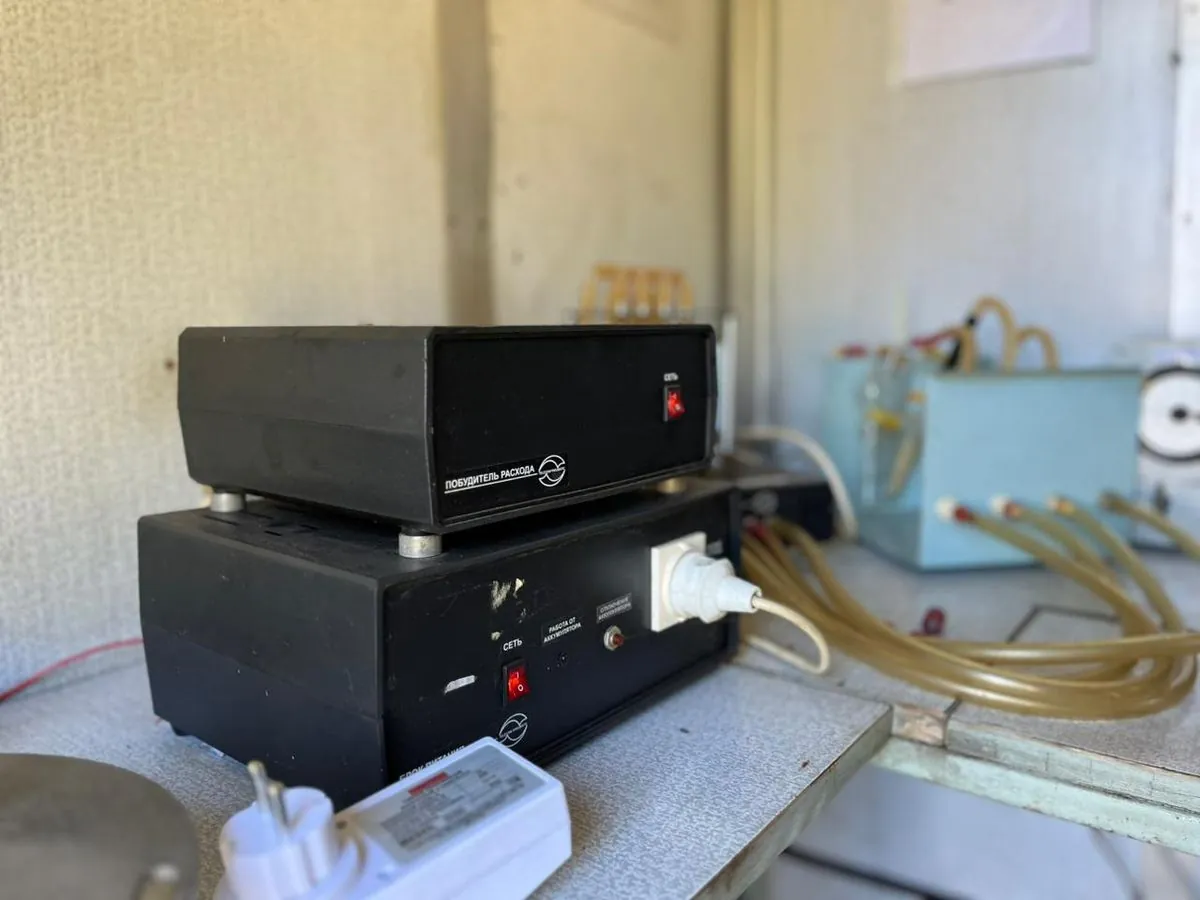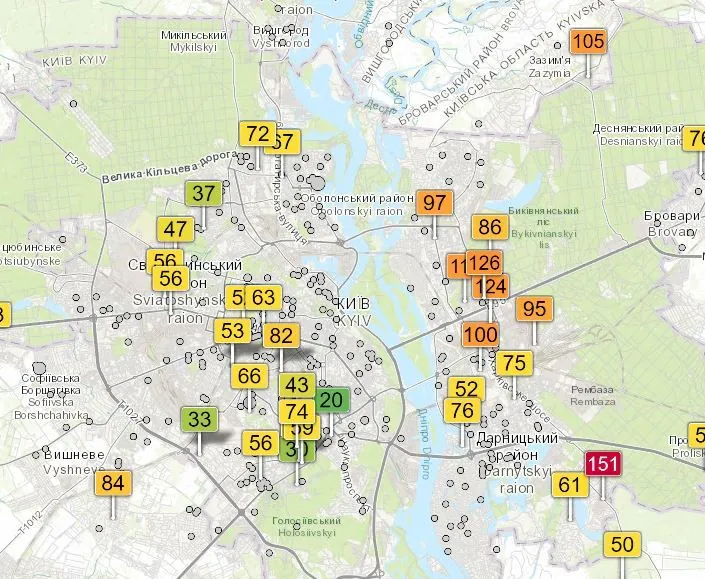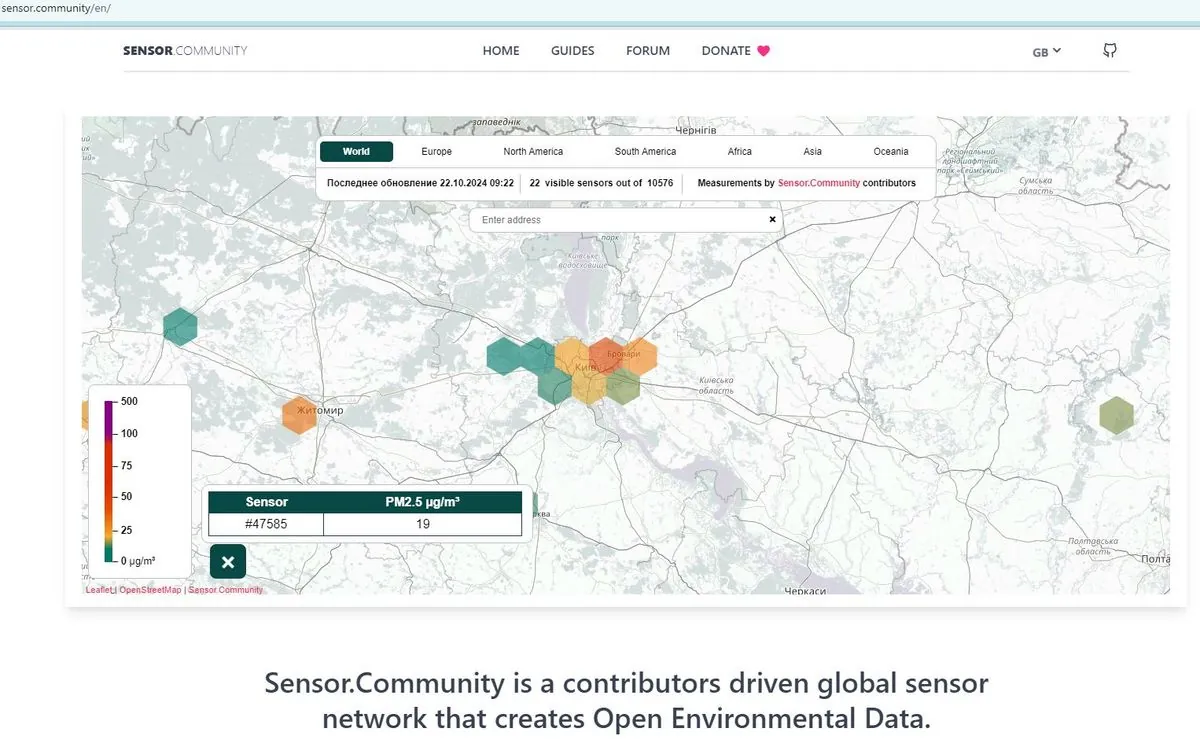Air pollution has become a serious problem for Kyiv residents, which is not only recorded in environmental reports, but also affects the daily life of the city's residents. Recently, elevated levels of dust and smog have been regularly observed in the capital, causing concern among the population. In this context, the question is particularly relevant: who and how monitors air quality in Kyiv, and what are the consequences of this pollution for people's health?
People feel fatigue, headache and shortness of breath, but they don't always think that it is the air we breathe that causes them to feel bad. Usually, we pay attention to it only when we feel an unpleasant smell or see gray fog, or when information appears that air pollution indicators are exceeded. And where do these indicators come from? Who collects and forms the data and how?
Monitoring from the metropolitan authorities
The air quality monitoring system introduced by the Kyiv City State Administration is managed by the Department of Environmental Protection and Adaptation to Climate Change.
The development of the capital's air quality monitoring system began in 2020. The Department says that it was formed based on the experience of other countries. So, for example, similar equipment is used in Kyiv as in Vienna and Copenhagen. First, two reference (high-precision) stations were installed that collected data on atmospheric air quality. Later, in 2021, the system was supplemented with three more stations. And in 2022, before the start of a full-scale invasion, it was possible to launch two more additional posts. So, in total, 7 atmospheric air quality monitoring stations have been installed in Kyiv, which are located in Darnytskyi, Dniprovskyi, Podilskyi, Shevchenkivskyi, Sviatoshynskyi and Holosiivskyi districts. However, as Oleksandr Vozniy, director of the Department of Environmental Protection and Adaptation to Climate Change, notes, there should be more posts.
"We need more of them. About 15-17 more, simply, taking into account the fact that all equipment is imported and expensive, during the period of martial law, we suspended the purchase of this equipment, because now there are more important things on which we need to spend budget funds. And for informing and gathering information, 7 posts are quite enough," Oleksandr Vozniy explained.
In addition to reference (high-precision) stations, the capital also has 46 indicative sensors that help monitor air quality in those areas of Kyiv where there are no main stations.
Reference stations and indicative sensors
The difference between reference stations and indicative sensors is that the latter collect samples with a lower frequency and measure them with less accuracy. Reference stations are container-sized posts that occupy a small area and are quite autonomous, because they do not require a special worker to perform all tasks. Everything is done by the computer. Such stations are designed to measure a wide range of pollutants with greater accuracy. And indicative sensors are smaller in size, they can be placed on poles or trees, and their main function is to complement the entire system. However, some of the indicative sensors are currently undergoing maintenance. They promise to return them soon.
Sensors are regularly calibrated - this is the adjustment and verification of the accuracy of the measuring devices, which establishes the correspondence between the readings of the device and the real values it is supposed to measure. This is done to ensure that the device shows the correct results during operation. Also, the sensors undergo verification, that is, the issuance of a corresponding document on the equipment's serviceability.
Where can I see the results of the analysis of the KMDA monitoring system?
All data collected by the sensors of the monitoring system are freely accessible to everyone, and can be viewed either on the Department's website or in the "Kyiv Tsyforovy" application.
"One of the advantages of the monitoring system is that it is automated and user-friendly. In other words, all the data that the sensors collect every minute are automatically sent to the system, and city residents can monitor the air condition in real time in the "Kyiv Digital" application, said the director of the Department of Environmental Protection and Adaptation to Climate Change.
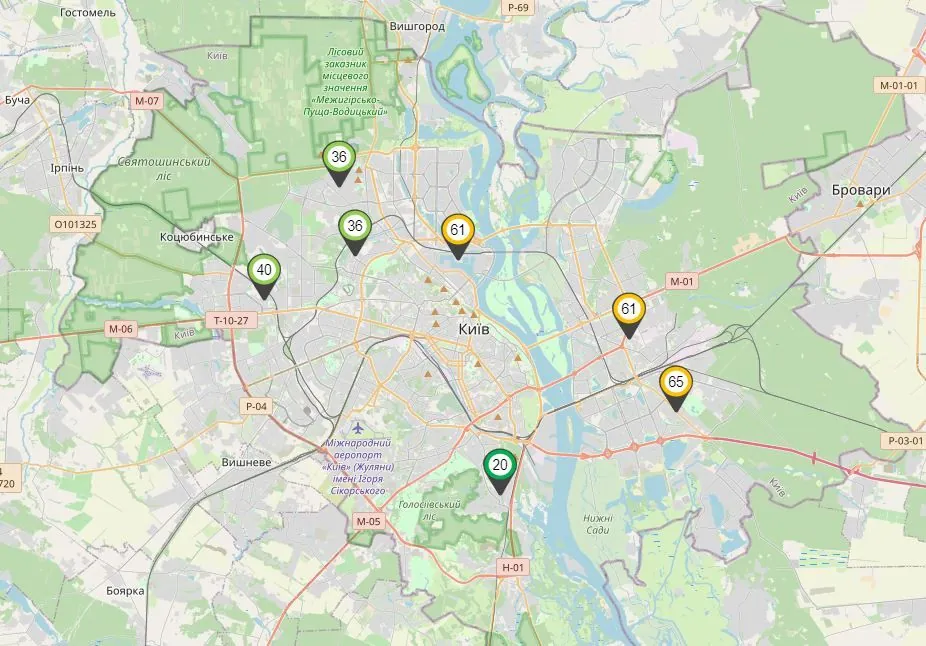
Funds for the implementation of the project were allocated from the city budget. However, this system was completed at the expense of patrons. For example, after the beginning of the full-scale invasion, when the Rashists took over the Chernobyl nuclear power plant, people began to wonder about the radiation background in the capital. At that moment, the company responded, which gave the city free of charge and integrated radiation measurement sensors into the monitoring system. Therefore, it is now possible to observe the radiation background of the capital in the same way as with the air quality in the "Kyiv digital" application.
Central geophysical observatory named after Borys Sreznevsky - what is the monitoring system made of
The Central Geophysical Observatory named after Boris Sreznevsky has been monitoring air quality in the capital since 1965. Today, the observatory has 16 stationary observation posts equipped with the necessary devices for air sampling. They are located in 8 out of 10 districts of Kyiv. There are no PSZs only in Darnytskyi and Svyatoshynskyi districts.
In addition to Kyiv, the Central Geophysical Observatory named after Borys Sreznevskyi also serves the Kyiv region in terms of laboratory control screenings. So, for example, there are posts in Bila Tserkva, Brovary, Ukrainka and Obukhiv. Also, due to the lack of own chemical laboratories in Zhytomyr and Chernihiv, the observatory analyzes samples for these cities as well.
"Once a week, samples are taken at their posts and sent to us. We analyze, and at the end of the month all the information is collected, we send it to our information department, and they already provide them with certificates about atmospheric air pollution in their cities. Then, on the basis of all these data, a six-monthly report on the state of the air is prepared, as well as a yearbook for the whole of Ukraine," said the head of the laboratory for monitoring atmospheric air pollution, Nina Rotach.
How the Central Geophysical Observatory examines the air
Sampling is carried out 4 times a day and takes place in accordance with existing state standards and guidelines. Here, the process of checking air quality takes a little longer, compared to the KMDA monitoring system. First, samples are taken in glass Richter absorbers or sorption tubes with a sorbent. Then laboratory workers come to the post, collect samples and take them to the laboratory. Air samples are already being analyzed there in accordance with the requirements of the 1991 "Manual on Atmospheric Pollution Control".
During the year, up to 80-90 thousand samples are taken at 16 posts of the observatory, which are analyzed in the laboratory for monitoring atmospheric air pollution.
To analyze samples in the laboratory, photocolorimetric, atomic absorption, spectrophotometric and gas chromatography methods are used, as well as traditional physicochemical methods of analysis.
The equipment used in the observatory undergoes technical inspection every year, as well as the monitoring system of the KMDA, the above-mentioned - calibration and verification of devices. Also this year, the atmospheric air pollution observation laboratory passed certification from the State Enterprise "Ukrmetrteststandart".
The observatory publishes its research on the website in the form of daily tables with recorded indicators and in the form of summary information with monthly indicators.
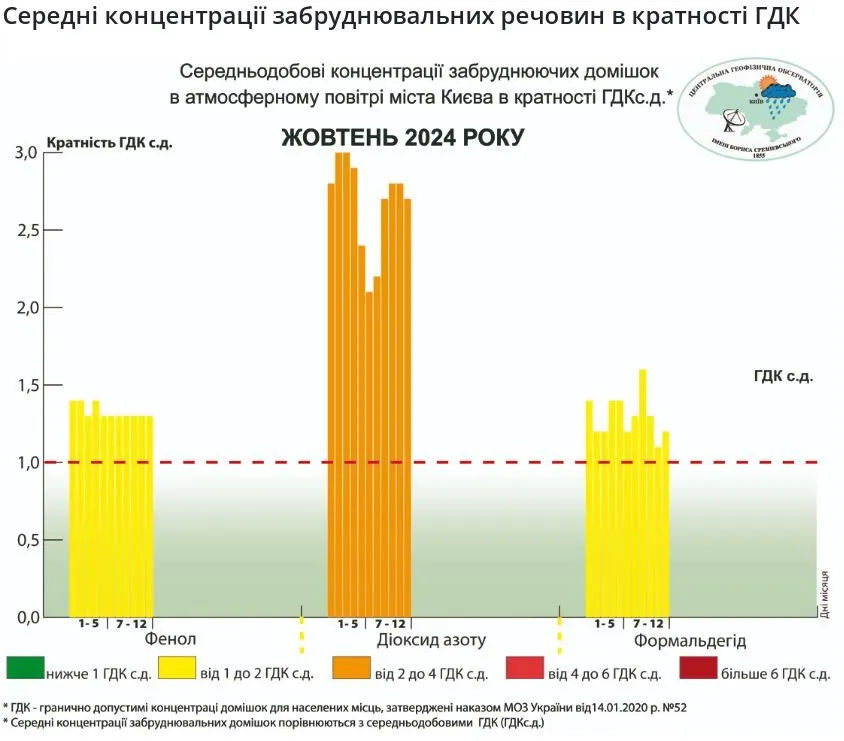
Alternative monitoring systems and how Kyiv became a world leader in air pollution
According to the general air pollution index, the capital is regularly included in the list of cities with a high level of pollution.
Among the international organizations fighting air pollution is the Swiss company "IQAir", which forms the global index of the state of atmospheric air. So, in 2022, according to this company, Kyiv was included in the anti-rating of the most polluted cities in the world. Just then, the Department of Environmental Protection and Climate Change Adaptation was actively working on its air quality monitoring system. And they discovered that the source of information for "IQAir" was 8 anonymous users in the territory of the city of Kyiv. As the KMDA explains, these were people who installed private sensors, for example, just in their yard. The problem, according to Vozny, was that these sensors measured pollution by only one indicator – PM 2.5 (suspended solid microparticles) and did not always provide accurate data.
"Based on these data, Kyiv was included in the ranking of the dirtiest cities. We began to develop the city system, we have more reliable information about the state of the air. We contacted IQair and prepared the appropriate software for them to take data from the city's monitoring system. Because it was very important that they operate precisely with reliable data, which are determined by our regulations and laws. In addition, we do this at the expense of more accurate equipment," said Oleksandr Vozny.
Since that time, according to the director of the Department, Kyiv has entered the rankings of the cleanest capitals in the world. For example, in 2023, Kyiv took 22nd place in the ranking with the cleanest air.
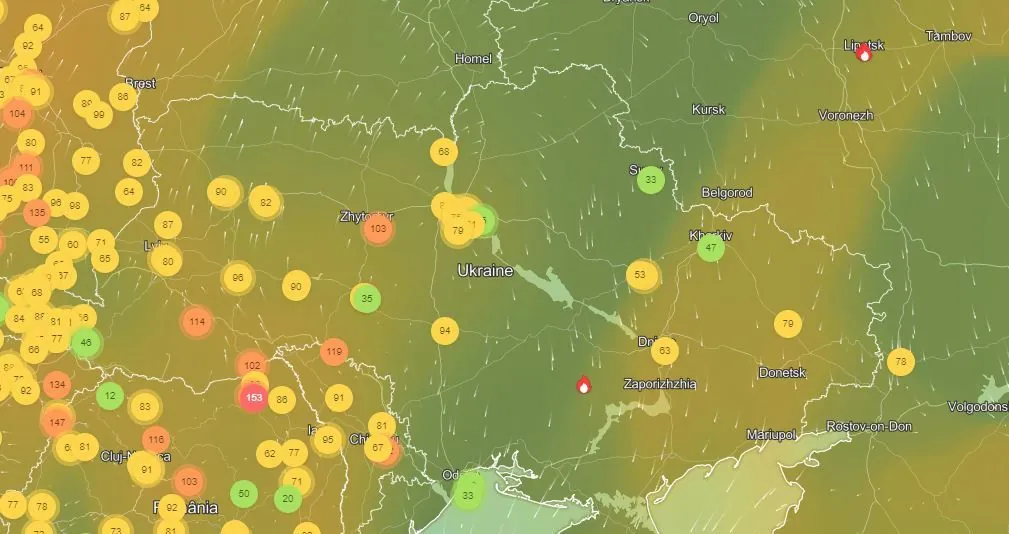
Anyone can get data from the monitoring system not only through "Kyiv Digital" or the already mentioned "IQAir", but also on the Saveecobot platform. In addition, there you can see that air quality monitoring is also carried out by private initiatives, and the Kyiv National University named after Taras Shevchenko.
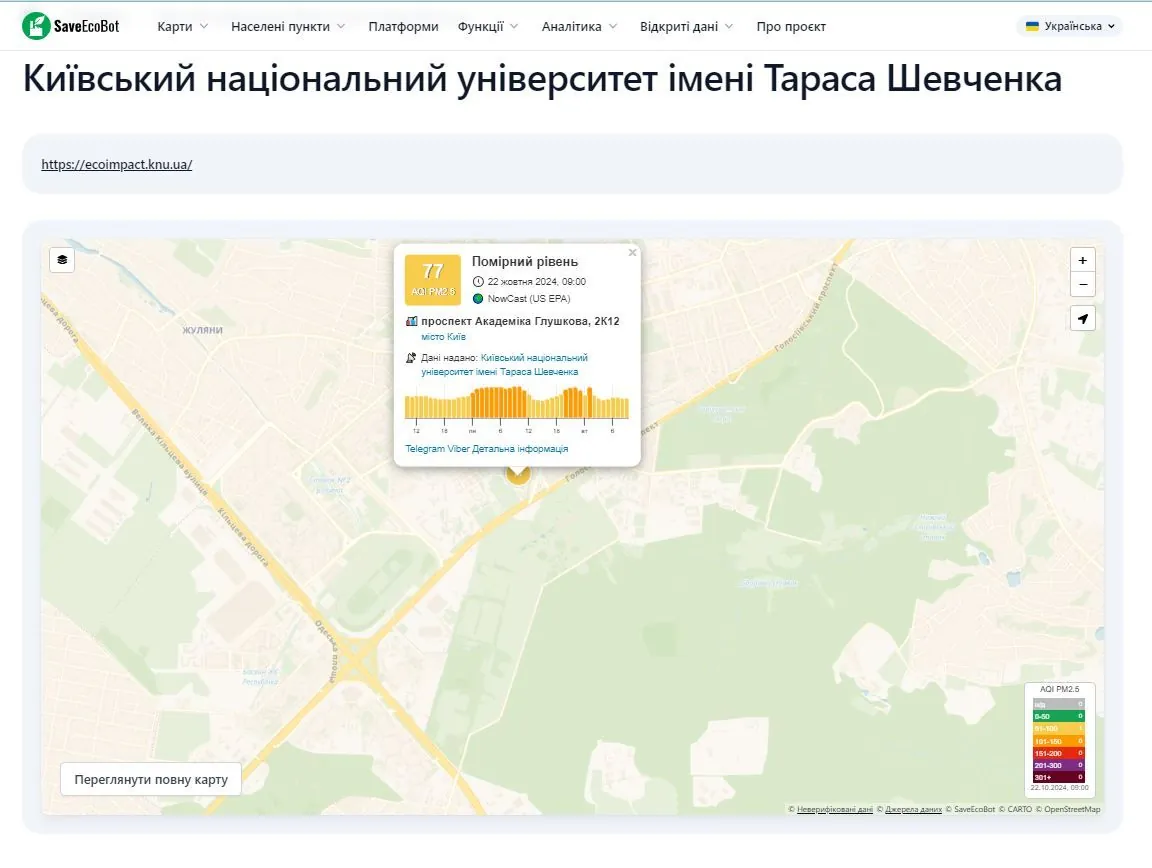
In addition, the data is published by the portal of the "World Air Quality Index" project. The interactive map of the project displays data from a large number of sensors. However, we were unable to find data from the monitoring system installed by the KMDA there. Instead, it displays sensors installed on a private or public initiative (whether to trust their data or not is an open question), some of which have been inactive for a long time. Another source of information is the interactive map of Sensor.Community, a global sensor network that creates open data about the environment. But there are not many of their sensors in the capital.
The presence of substances in the air is monitored and how dangerous they are
The main substances measured by the monitoring system of the Department of Environmental Protection and Adaptation to Climate Change include: sulfur dioxide, nitrogen and carbon oxides, ozone, ammonia, hydrogen sulfide, formaldehyde, benzene.
Solid particles are also measured - this is fine dust formed during industrial production, fires and waste burning. The air quality monitoring system of KMDA records the air condition using the general air quality index CAQI. This index is measured by indicators of several pollutants, the concentration of which in large doses harms human health. Next, the CAQI digital indicator is given a level that reflects the potential harm to human health. KMDA uses a five-level scale, in which the CAQI indicator varies from 0 to one that exceeds one hundred.

At the posts of the Borys Sreznevsky Central Geophysical Observatory, all the substances listed above are also selected and analyzed. But in addition to them, the laboratory measures suspended substances, soluble sulfates, nitrogen dioxide, phenol, hydrogen chloride and fluoride, and heavy metals.
The main pollutants in the capital's air are formaldehyde and nitrogen dioxide. The average annual concentrations of these substances exceed the daily average MPC (maximum permissible concentration) by 2-3 times. Especially in warm periods of the year, the average monthly concentrations of these impurities can exceed sanitary and hygienic standards by 5-6 times. In general, if we talk only about formaldehyde, it is a colorless gas that is formed as a result of the incomplete combustion of fossil fuels or waste. Long-term inhalation of vapors of this substance can provoke not only general weakness and the appearance of allergic reactions, but also much more serious health problems, up to the development of oncological diseases. Severe poisoning with formaldehyde can provoke the development of changes even at the gene level.
Nitrogen dioxide is also a colorless gas that enters the air from car exhausts, which is the main source of air pollution in the city. Automobile emissions reach 80% of all emissions into the atmosphere.
Also, in the air of some areas of the city, there are high concentrations of suspended substances, carbon monoxide, phenol, and nitrogen oxide. Such substances, in particular, have a negative effect on the respiratory tract and nervous system.

